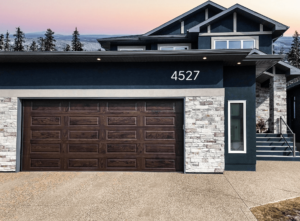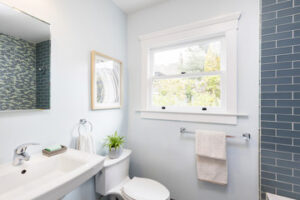A garage door is essential to the safety and security of your vehicle and belongings. It’s also a good investment for your home’s value and curb appeal.
When choosing a garage door, you should consider your climate, maintenance preferences and energy efficiency requirements. Different materials have different benefits. Some naturally insulate, while others can be made energy-efficient with additional insulation. Contact JCTZ Garage Doors now!

There are several different types of garage doors that homeowners can choose from. Each type has its unique benefits and costs. These include the type of material, insulating value, and customization options. Choosing the right garage door can help increase curb appeal and add value to your home. There are also a variety of finishes and colors available to match your style. Some doors have insulation that can help reduce energy bills during the winter in Ohio and Michigan.
Roll-up garage doors are designed to save space and are typically made of steel or aluminum. They run along vertical tracks on each side of the garage door opening and horizontal tracks above. These tracks can be curved or straight depending on your preference and garage layout. They are also flexible enough to accommodate slight slopes in the floor or ceiling. They can be insulated for increased energy efficiency and are easy to maintain.
Swing-open and swing-closed garage doors resemble large barn doors and are typically made of wood. They can be a good choice for homeowners with limited headroom or who want to create a rustic or country-style home. They are lightweight and easy on springs, but their insulating value is low.
Sectional garage doors are the most popular in the United States and consist of panel sections that are connected with hinges. They are opened and closed by wheels that roll inside a vertical track on each side of the door opening. The hinges on the panels bend over a curved portion of the track to allow the door to sit parallel to the ceiling when fully open and in line with the walls when fully closed. A set of high-tension springs above the opening is attached via cables to operate and hold the door when it is only partially open.
Residential wood garage doors are beautiful and add curb appeal to your home. They are also durable and can withstand harsh weather conditions. However, they require regular maintenance and can be quite expensive. If you’re considering a wooden garage door, choose a moisture-resistant wood like cedar or redwood. You should also opt for a polystyrene backer to add insulating value.
Insulation
Insulation in a garage door helps to regulate temperatures, which can reduce energy costs. It also offers protection against noise and intruders. In addition, it can help to prevent cold air from seeping into the house in winter and hot air from entering in summer. This is particularly important if the garage is used as a workshop or living space. Insulated doors also add resale value to your home.
Garage door insulation is available in various types, each designed to meet the needs of homeowners. Insulation is usually found between the panels of the garage door and can vary in thickness and composition. Some materials that offer good insulation include fiberglass, cellular vinyl, and polystyrene foam. These materials are also durable and low-maintenance. They do not require painting or staining and can resist corrosion.
The type of insulation will depend on your budget, climate conditions, and personal preference. For example, a polystyrene insulated garage door is more expensive than a fiberglass insulated door. However, it is more durable and will last longer than a fiberglass door. Polyurethane insulated doors are ideal for high-performance applications and are available in several R-values.
In addition to the insulating material, the garage door will need a sturdy frame to support it. Steel frames are often the most economical choice, but you can also choose aluminum or wood. Aluminum is more durable than steel and is less likely to rust, while wood adds a traditional look to your home.
A new garage door is a major investment. It is therefore important to select one that meets your needs and budget. In addition to cost, you should consider resale value and safety. It is also important to understand how a garage door works before you purchase it.
There are three main types of garage doors: monolithic, sectional and roll-up. Monolithic doors consist of a single panel that swings up on hinges on each side to open. Sectional doors are made of sectional panels that connect with each other with hinges. They are more versatile than monolithic doors and can be opened at a higher angle. They can also be closed in line with the ceiling or at a lower level. They are a popular option for people with limited headroom.
Durability
Whether you choose wood, steel or aluminum, a garage door should be durable enough to withstand everyday wear and tear. Some models even come equipped with security features to protect your home from intruders. However, to ensure your garage door lasts as long as possible, it’s important to regularly inspect and maintain it. This will help you spot any potential problems and address them promptly. Some of the most common maintenance tasks include lubrication, a balance test, a visual inspection and tightening.
Steel doors are a popular choice due to their durability and low maintenance requirements. They can withstand harsh weather conditions, and many manufacturers offer hundreds of color options. Steel doors can also be customized to complement the architectural style of your home. For example, Clopay’s steel-to-wood composite doors allow homeowners to achieve a wooden or carriage door look with maximum durability and insulation capabilities.
Wood-look doors offer a classic appearance that enhances the curb appeal of any home. They also provide excellent insulating properties and are available in many different styles. They may feature a traditional frame-and-panel design or have decorative overlays, such as cross-buck designs and moldings. Some manufacturers even offer insulated foam cores to increase the strength and insulating value of their wood-look models.
Most wood-look garage doors have a high level of durability, but they are also susceptible to damage and rust. Some common damage includes dents, warping and rotting. To prevent these issues, it’s essential to have your garage door inspected and repaired by a professional technician.
While aluminum is a popular garage door material, it’s not as durable as steel. It can dent or become damaged easily, especially if it’s exposed to salty environments. Additionally, it’s not as resistant to corrosion as steel or wood.
Fiberglass garage doors have a more natural appearance than metal and are often used in modern homes. They’re highly customizable and easy to maintain, but they can be more expensive than other garage door materials. They’re also prone to corrosion and require regular cleaning to keep them looking new. Regular lubrication will also prolong their life and reduce the likelihood of damage.
Appearance
A garage door can serve a variety of purposes, from providing protection and privacy to enhancing the home’s appearance. It’s important to consider the type of door, color, style and material to choose a look that suits your taste and fits the style of your house. Choosing a garage door that complements your home’s architecture can add character and increase resale value.
If you want your garage door to attract attention, try using a bold color that will stand out against the background of your home. If you’re looking for something more subtle, try a light neutral shade that will match the home’s overall color scheme. Light colors reflect light and heat away from your garage, which can help boost energy efficiency.
You can also use trellises and other types of greenery to add flair to your garage door. Tall plants like bougainvillea can make your garage look more attractive and create an eye-catching focal point. Decorative details like wrought iron hinges and handles can give your garage door a more personalized touch.
Wooden garage doors offer a classic, rustic charm that complements many architectural styles. They’re available in a wide range of colors and finishes, so you can find one that best matches your home’s color palette. However, they may require more maintenance than other types of garage doors. If you’re looking for a more modern aesthetic, you might prefer a steel or fiberglass door that has the look of wood but is more resistant to rust and damage.
Another option is a sectional garage door, which is made of horizontal panels that hinge and travel upward on tracks installed on the garage wall. This type of door is ideal for garages with limited headroom. It can save space and still provide plenty of headroom for overhead storage or work spaces.
A wood composite garage door is a good choice for homeowners who want the look of traditional wood but don’t have the time or budget to maintain it. This type of garage door has the benefit of being insulated, and it’s available in a variety of styles and colors. It’s also less expensive than wood, but it can be prone to warping and rot.








